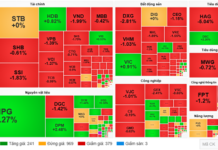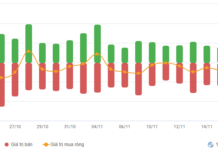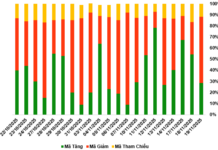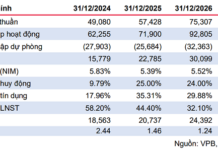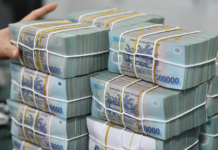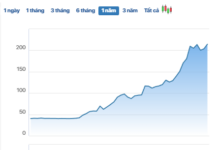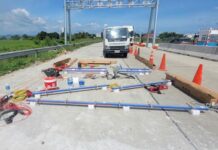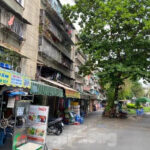The Real Estate Peak Season is Approaching
According to MB Securities’ (MBS) Q3/2025 real estate industry report, even during the Ghost Month, the market witnessed the launch of several new projects with positive booking rates.
Reports from real estate research firms indicate that in Q3/2025, the primary supply of high-rise apartments in Ho Chi Minh City reached over 10,600 units, a 3.2-fold increase compared to the previous quarter and 2.3 times higher than the same period last year. Specifically, the primary supply in the established areas of Ho Chi Minh City during Q3/2025 reached nearly 4,700 units, up 40.5% from the previous quarter.
Grade A apartments remained the focal point of Ho Chi Minh City’s market in Q3/2025, accounting for over 51% of the total supply, followed by Grade B apartments at 36%, and Grade C apartments at 12%.
The absorption rate in the new areas of Ho Chi Minh City during Q3/2025 reached 67.8%, while the established areas recorded a 58.4% absorption rate, double that of the previous quarter. Cumulatively, in the first nine months of 2025, the established areas of Ho Chi Minh City saw over 5,200 apartments sold, a 23% increase compared to the same period last year. Grade A and B apartments dominated transaction volumes over luxury and Grade C apartments.
MBS noted that the market’s recovery in Q3/2025 was driven not only by improved demand after a sluggish period but also by flexible and timely sales strategies from developers.
Following a prolonged period of market consolidation, robust companies are now leveraging this opportunity to solidify their positions. Activities such as launching new phases, unveiling show units, introducing promotional policies, and intensifying marketing efforts are creating a vibrant trading season toward year-end. Notably, most projects launching in Q4 are concentrated in the eastern part of Ho Chi Minh City.
For instance, Masterise Homes recently launched Masteri Park Place, a high-rise segment within The Global City urban area. Gamuda Land partnered with Dien Phuc Thanh to jointly develop and market the MT Eastmark City project, while also launching new phases of Eaton Park and Elysian, among others.

Projects like The Privé demonstrate that the market is entering a phase of “selective filtering,” where high-quality, long-term value products are favored by buyers.
For example, The Privé by Dat Xanh Group has garnered significant buyer interest due to its comprehensive strengths: transparent legal framework, premium construction quality, comprehensive amenities, and a rare central location. The launch of The Privé is seen as a positive signal for the Ho Chi Minh City market, contributing to a diversified supply of quality properties focused on practical value, including actual living needs and rental potential for high-end customers.
Year-End Market: “Hot” but Selective
The latter half of Q4 is expected to be the real estate “peak season.” This period sees developers ramping up sales to meet annual targets, while buyers tend to make quicker decisions due to year-end financial flows and increased remittances.
Speaking with reporters, Mr. Nguyen Trung Tuan, a real estate legal expert, believes the current market vibrancy stems not only from seasonal factors but also from a convergence of positive signals.
First, interest rates have significantly dropped compared to the same period last year, making credit more accessible. Many banks are offering preferential loan packages ranging from 6–8%/year, along with extended fixed interest rates, substantially easing financial pressure.
Second, legal hurdles have been addressed, unblocking many previously stalled projects. Revised laws—including the Land Law, Real Estate Business Law, and Housing Law—expected to take effect in 2025, are boosting confidence among businesses and investors.
Third, FDI and remittance inflows are growing positively, particularly in Ho Chi Minh City, where remittances this year are estimated at over $9 billion, a significant portion of which is flowing into real estate. Actual living demand from foreign experts, young professionals with stable incomes, and multi-generational families remains steady.
Long-Term Drivers of the Ho Chi Minh City Market

Dr. Dinh noted that many current projects are closely aligned with key infrastructure developments, factors that not only enhance inter-regional connectivity but also contribute to future asset value appreciation.
Dr. Nguyen Van Dinh, Chairman of the Vietnam Real Estate Brokerage Association (VARS), asserts that Ho Chi Minh City is one of the most promising markets due to robust infrastructure development policies and regional planning momentum following administrative consolidation—key factors bolstering investment appeal.
However, VARS advises investors to remain cautious amid market restructuring. Dr. Dinh emphasizes, “Investors should carefully select segments, assess financial capabilities, and prioritize long-term strategies over herd mentality or short-term profit expectations to ensure safety and effectiveness.”
Similarly, Mr. Nguyen Quoc Anh, Deputy General Director of Batdongsan.com.vn, notes that the market is shifting toward property types with practical usage potential. “The current price increase cycle differs significantly from previous periods. While cheap capital and abundant credit previously drove speculative assets like land plots to rise first, the current trend sees gold, stocks, and real estate appreciating simultaneously,” Mr. Quoc Anh explained.
A survey by Batdongsan.com.vn reveals that the most sought-after property types are apartments (34%), land plots (33%), and private houses (21%). However, trends are shifting noticeably. Over the next 12 months, 33% of respondents plan to invest in private houses, while 31% still favor apartments. Interest in land plots has declined sharply, reflecting investors’ shift from speculative products to those offering stable cash flow.
Revitalizing Ho Chi Minh City: 19 Aging Apartments Slated for Redevelopment, Investors Sought
The following residential buildings, which have been deemed unsafe following inspections, are slated for relocation: 47 Long Hưng, 40/1 Tân Phước, 170-171 Tân Châu Street, 155-157 Bùi Viện Street, 11 Võ Văn Tần Street, Trúc Giang, Vĩnh Hội, Tôn Thất Thuyết, and Hoàng Diệu. However, the demolition process for these properties remains incomplete.
Vietnam’s TOD Urban Revolution: Unlocking the Potential of Next-Gen Megacities
The Transit-Oriented Development (TOD) model is an essential strategy for creating modern, sustainable living spaces and addressing land scarcity in major urban areas, particularly in Ho Chi Minh City. By integrating urban development with public transportation, TOD fosters efficient land use, reduces congestion, and enhances quality of life, making it a cornerstone for future-proof cities.


